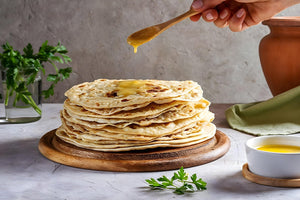
Guardians of Tradition: The Essential Role of Indian Cattle
Globally, indigenous cattle occupy a vital niche that is often overlooked in favor of high-yield exotic breeds. Yet, these native breeds play a crucial role in maintaining agricultural biodiversity, supporting rural economies, and ensuring food security. As we navigate the challenges of climate change, economic sustainability, and ecological balance, the importance of indigenous cattle becomes obvious.
India boasts a wide array of indigenous cattle breeds. According to various sources, the country has around 43 recognized indigenous cow breeds. There has been a noticeable decline in the population of indigenous cattle breeds and it’s our duty to conserve them.
Why Do We Need Our Indigenous (Indian breed) Cattle?
Adaptation to Local Environments
Indigenous cattle are intrinsically adapted to their local environments. For example, breeds like the Indian Gir, Sahiwal, Red Sindhi, etc. are well-suited to withstand the high temperatures and limited water supply of their native regions. This adaptability reduces the need for extensive veterinary care and supplemental feeding, making them more sustainable and economical for small-scale farmers. Their ability to graze on local fodder also minimizes the ecological footprint associated with imported feed.
Cultural and Economic Significance
For many rural communities, indigenous cattle are more than just livestock—they are a part of cultural heritage. They play an integral role in traditional farming practices, ceremonies, and social structures. Economically, these cattle provide a steady source of income through milk and dung (used as manure or fuel). The maintenance of indigenous cattle breeds supports rural livelihoods and can help reduce poverty in these communities by ensuring a reliable, sustainable income source.
Environmental Sustainability
Indigenous cattle contribute to environmental sustainability in several ways. Their grazing patterns help maintain the balance of local ecosystems by preventing overgrowth of vegetation and promoting soil health. Additionally, the manure from these cattle is a natural fertilizer that enhances soil fertility without the harmful effects of chemical fertilizers.
1. Natural Fertilization - Cow Dung and Urine
- Rich in nutrients such as nitrogen, phosphorus, potassium, and organic matter.
- Improves soil structure, aeration, and water retention.
- Enhances microbial activity in the soil, promoting healthy soil ecosystems.
- Contains nitrogen and other beneficial minerals.
- Acts as a natural biofertilizer, enhancing the nutrient content of the soil.
2. Organic Composting - Vermi-compost
- Cow dung is an excellent medium for vermicomposting, producing nutrient-rich organic compost.
- Vermi-compost improves soil texture, fertility, and microbial activity.
- Mixing cow dung with other organic residues (crop waste, leaves) accelerates composting. The resulting compost is a balanced organic fertilizer for crops.
3. Natural Pest and Disease Control
- Cow urine can be used to prepare natural pesticides, reducing the need for chemical pesticides.
- Mixtures of cow dung and urine with neem leaves or other natural ingredients control pests and diseases.
4. Soil Erosion Prevention
- Proper grazing practices prevent overgrazing, reducing soil erosion.
- Cow manure deposited on grazing lands helps bind soil particles and prevent erosion.
5. Enhancing Soil Microbial Activity
- Cow dung promotes the growth of beneficial soil microorganisms, such as nitrogen-fixing bacteria and decomposers.
- These microorganisms break down organic matter, releasing nutrients and improving soil fertility.
Difference between Indian Cow Breeds and Foreign Cow Breeds!
Indigenous cattle are a cornerstone of sustainable agriculture, ecological balance, and rural economies. Their resilience, adaptability, and cultural significance make them indispensable in the quest for a sustainable and secure agricultural future. By valuing and conserving our indigenous cattle breeds, we not only preserve a critical aspect of our agricultural heritage but also ensure the sustainability and resilience of our farming systems in the face of global challenges. Embracing these native breeds is not just a nod to the past but a step toward a more sustainable and secure future.





